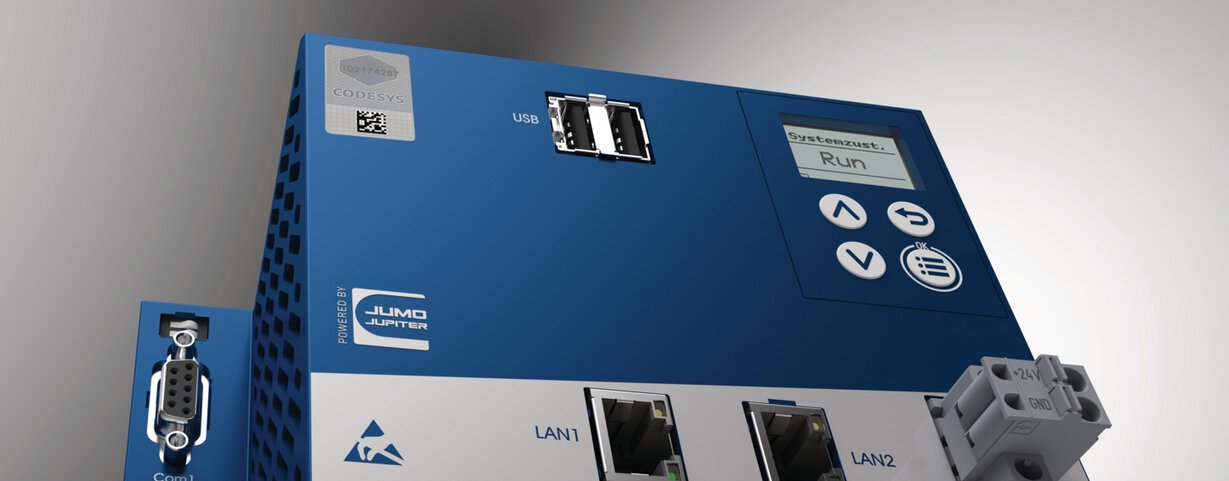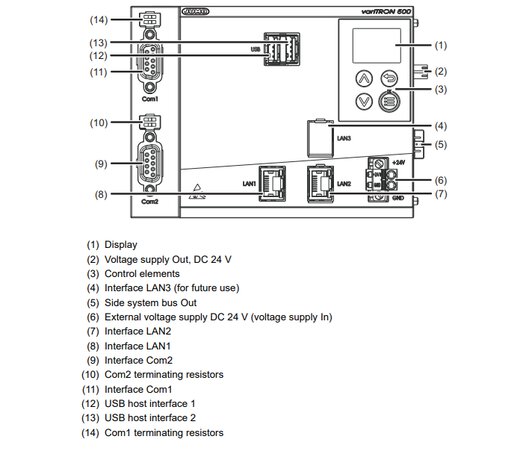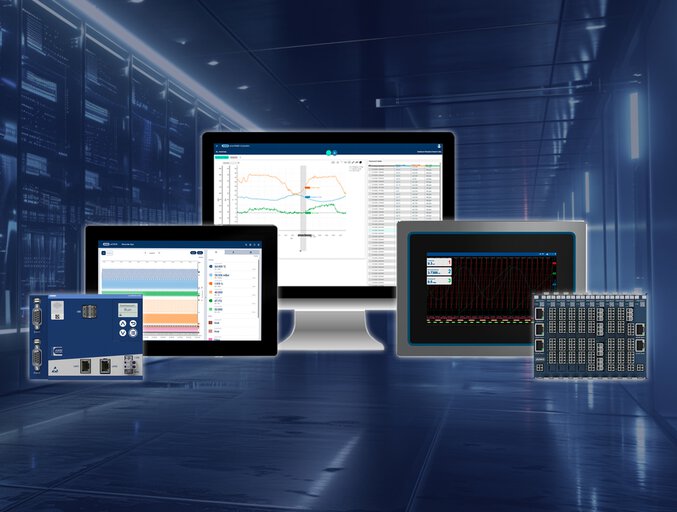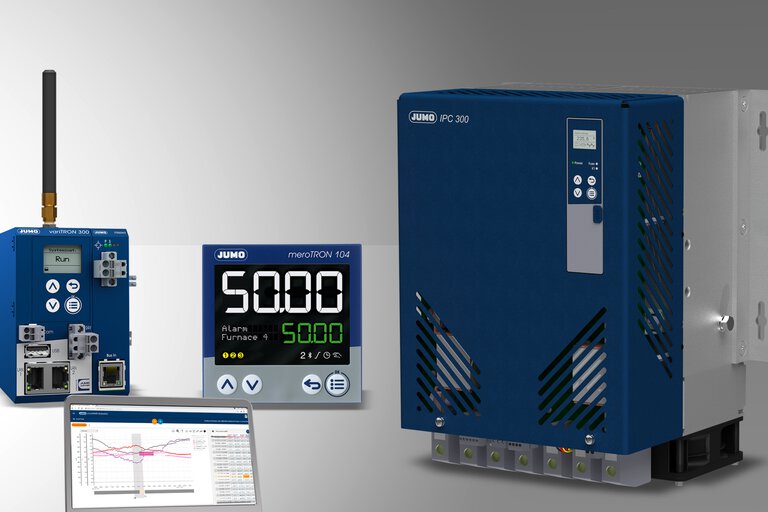

What is a PLC | Explanation, operation and applications
Wondering how industrial processes run automatically and reliably? Meet the PLC : the brain behind modern automation!
Table of content
What is a PLC (Programmable Logic Controller)?
A PLC (Programmable Logic Controller) is an industrial computer specifically designed to control machines and processes automatically. PLCs are robust, reliable and can be easily programmed for a variety of applications in industry.

PLC controller with modules JUMO variTRON 500
How does a PLC work?
A PLC receives signals from sensors (such as temperature, pressure or level), processes them according to a preset programme and then controls actuators (such as motors, valves or lamps). This allows processes to run fully automatically, without human intervention.
In a nutshell:
- Input: sensors send signals to the PLC.
- Processing: the PLC processes these signals according to the set programme.
- Output: the PLC controls actuators to control the process.
PLC construction
PLCs consist of components such as:
-
Central processing unit (CPU)
-
Digital inputs
-
Analogue inputs
-
Digital outputs
-
Analogue outputs
-
Power supply module
-
Communication module
-
Memory

Construction of a PLC based on the JUMO variTRON 500

Construction of a compact PLC based on the JUMO variTRON 300
Watch the short JUMO variTRON PLC video
Advantages of a PLC
- Reliable: designed for continuous use in harsh industrial environments.
- Flexible: easily reprogrammable for different applications
- Scalable: suitable for both small machines and large production lines.
- Fast fault detection: PLCs can detect and report faults quickly.
Applications of PLCs
PLCs are used in almost all industries where automation plays a role, such as:
- Production lines in the manufacturing industry
- Water treatment plants
- HVAC systems (heating, ventilation, air conditioning)
- Transport and sorting systems
- Energy management
Why choose a PLC from JUMO?
JUMO offers innovative PLC solutions that are easy to integrate into existing systems. Our controllers are user-friendly, reliable and feature the latest technologies in communication and integration.
Frequently asked questions about PLCs
1. What is the difference between a PLC and a standard computer?
A PLC is specially designed for industrial automation and is much more robust than a standard computer.
2. Can I programm a PLC myself?
Yes, but knowledge of programming languages such as Ladder Diagram (LD), Functional Block Diagram (FBD, Instruction List (IL), Sequential Function Chart (SFC) and Structured Text (ST) is required. Feel free to contact us for explanation and support.
3. When should I use a PLC?
In complex industrial applications and production processes, it is advisable to use PLC technology. This is because PLCs work well with other systems such as PC;s, PAC;s (Programmable Automation Controllers) control equipment and HMI's.
4. Are PLCs also suitable for small companies?
Absolutely! PLCs are scalable and therefor suitable for both small and larger applicaions.
Choosing the wrong type of PLC controller for a particular application can lead to problems in interaction with other equipment or difficulties in installation in the machine, among other things.
How to avoid problems and choose the right PLC?
Decide how many and which inputs/outputs you will use in your project, including whether they are analogue inputs (voltage or current), temperature or pulse inputs, and transistor or relay outputs.
Note: when you have chosen the right number of input/output circuits, add about 15%. This will avoid problems when the installation is expanded in the future.
- Check the amount of space you have
- Decide which functions you need
- Check that the PLC supports the communication protocol to communicate with your other equipment
- Check the number and type of ports and check the possibility to expand with additional ports
Want to know more about automation or our PLC solutions? Contact JUMO or check out our FAQ about PLC!
About the Author
My name is Saskia van der Laan and I have been working at JUMO for quite some time, combining my professional skills with my passion for writing. Always with the aim of using written text to translate technology into practice and to inform and inspire the reader. In my spare time, I like to do sports and enjoy a long walk with the dog.



